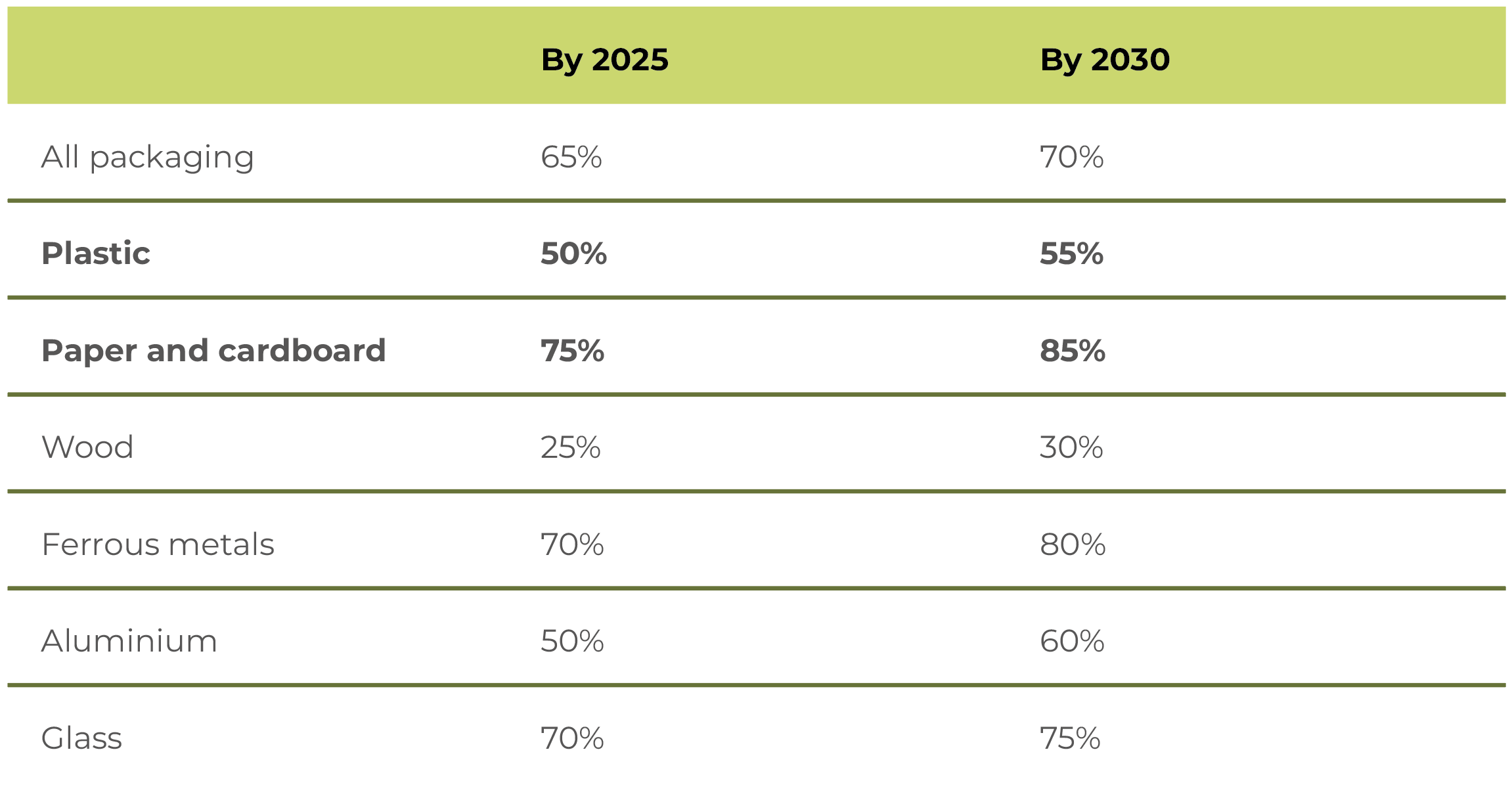
NextGenPaper enables “Green Deal”
Under the EU circular economy package (“green deal”), put forward in 2018, legally binding targets and timelines for waste recycling and the reduction of landfilling have been defined starting in 2025. The EU measures are the toughest in the world and have already pushed plastic packaging recycling rates to an all-time high >40% – three times that of the United States and a quantum leap versus most regions in Asia.
The EU green deal strategy includes a common target for recycling at least 55% of municipal waste by 2025; this target would rise to 60% by 2030 and 65% by 2035. Also envisaged is a common EU target for recycling 65% of packaging waste by 2025, and 70% by 2030. There are separate targets for specific materials.

By 2035, no more than 10% of municipal waste would be deposited in a landfill.
The EU circular economy package is expected to have direct and fast implications on a wide range of industries that produce or use plastic packaging. e.g., according to a Ernst and Young Tax alert published in 2021, UK, Spain and Italy are expected to be among the first to pass on the responsibility to manufacturers through the introduction of respective taxes for single-use plastic.11) As of March 2023 any business selling food and drink to French supermarkets must include a recycling logo on labels, as well as a QR code that gives shoppers detailed packaging and recycling information.12) Further, fruits and vegetables sold in units less than 1.5 kg must not be packed in single-use plastic containers. We expect to see many more local regulations to engage industry and likely also consumers to make the shift towards more sustainable packaging and consumption.